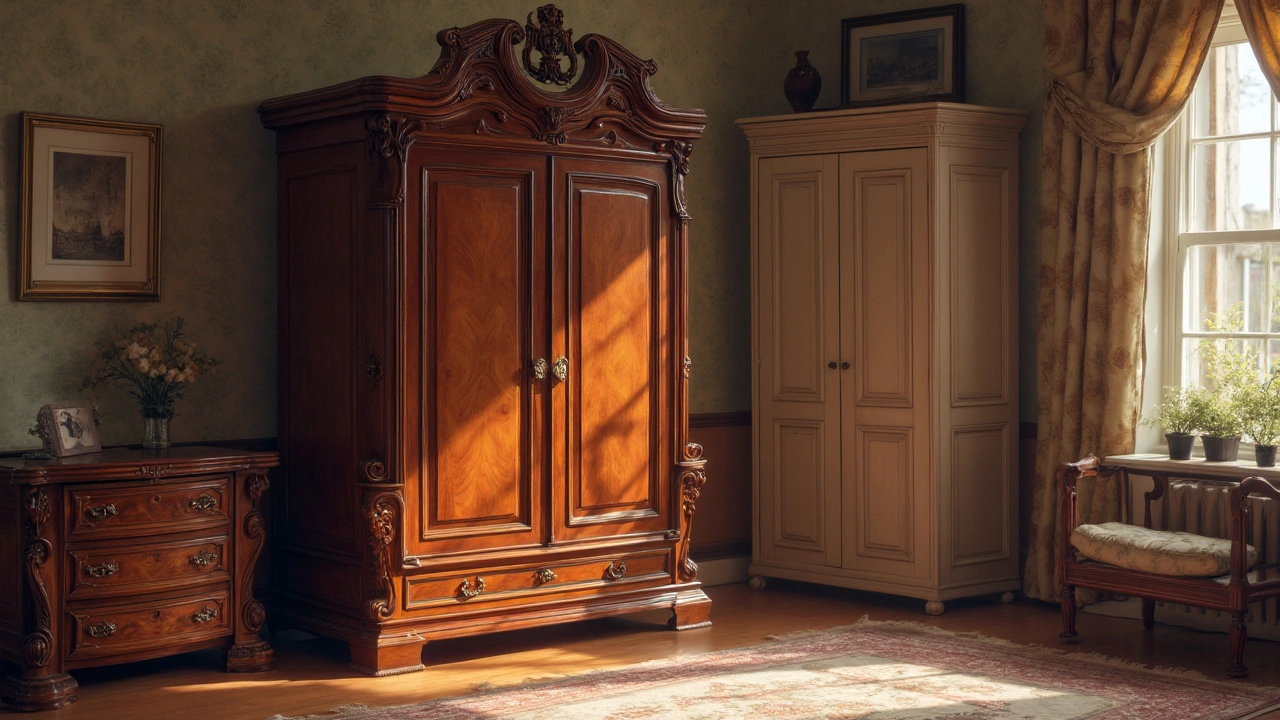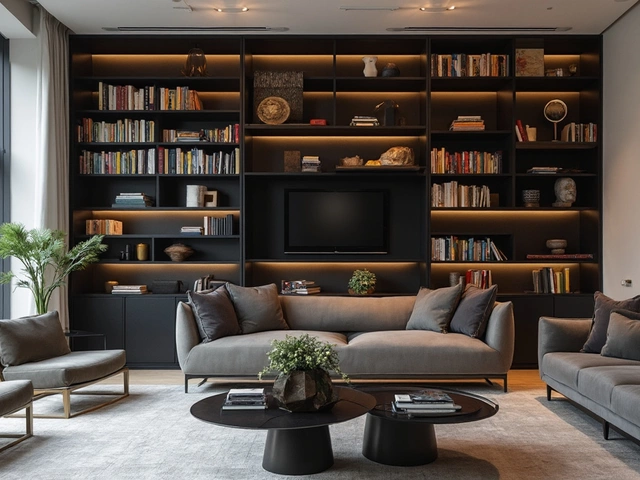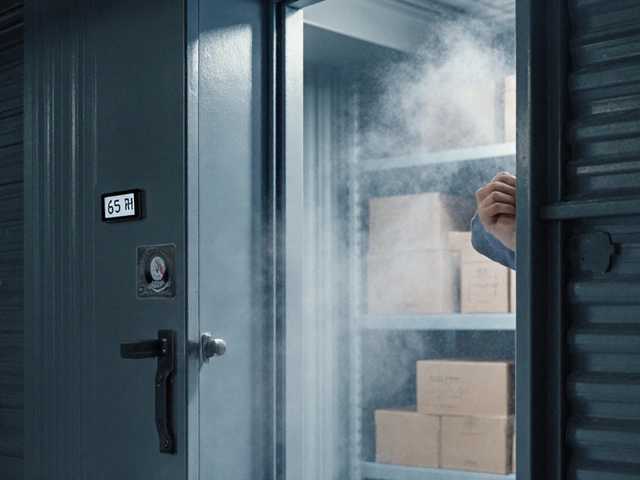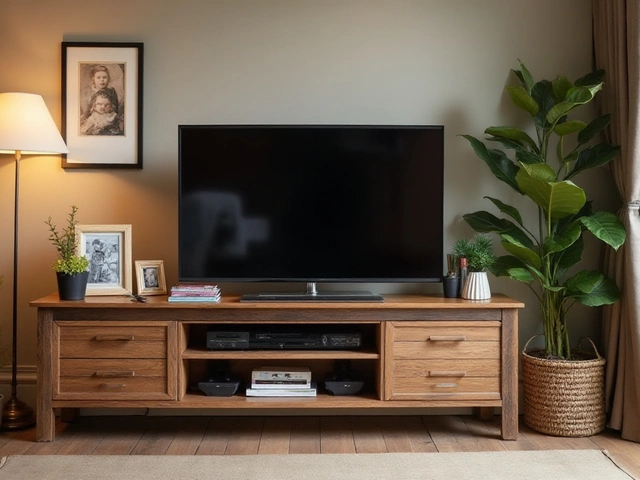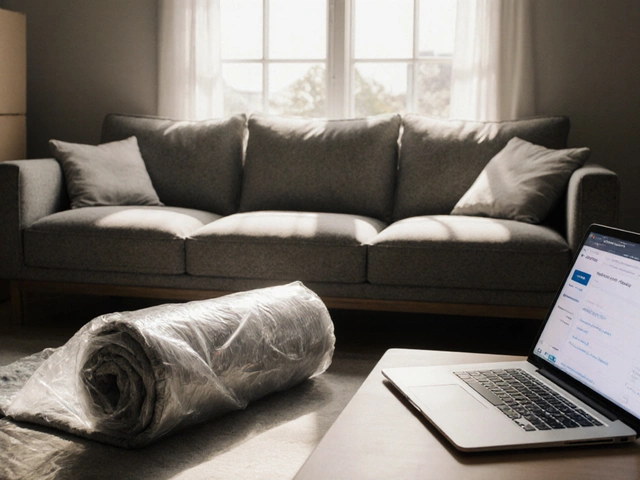So, you've always called that piece of furniture a 'wardrobe,' but your American friend keeps insisting it's a 'closet.' What's the deal? If you're asking about the American English version of the word 'wardrobe,' you're really talking about a 'closet.' That's right, while 'wardrobe' is what you'd typically hear in the UK, over in America, they've got a slightly different way of dressing up the language.
In the US, a 'closet' refers to a built-in space in a room used for storing clothes or other items. This term might seem pretty standard to anyone who's visited an American home, where these spaces are often integrated into the architecture. Meanwhile, 'wardrobe' in the US often means a standalone piece of furniture. It's not just about place, but also about function and design.
- Wardrobe vs. Closet: The Basics
- The American Take on Wardrobes
- Cultural Influences and Furniture Evolution
- Practical Differences in Usage
- Choosing the Right Word for Your Household
- Wardrobe Tips for Your Home
Wardrobe vs. Closet: The Basics
Alright, let's break down the basics of these two terms. In the realm of furniture, both a wardrobe and a closet serve the main purpose of storing clothes. However, there’s more to it than meets the eye.
A 'wardrobe' typically refers to a standalone piece of furniture. Think about that big wooden piece in the corner that your grandparents might have had. It's often movable and traditionally crafted from wood, featuring doors that swing open to reveal hanging space, and maybe a drawer or two.
Now, on the flip side, in American homes, a 'closet' is more commonly a built-in part of the room. It often features sliding or swinging doors and maximizes storage within the wall itself. This is super handy for keeping a room spacious and clutter-free.
Closets are integrated into the structure of a home, which means when Americans buy a house, they’re checking out these spaces to imagine all the sneakers, shirts, and jeans they can fit in there.
Interestingly, if we look at stats, homes in the US have shifted over the years with newer houses flaunting walk-in closets, which is like the VIP lounge of the closet world. These walk-ins take the concept one step further, offering a mini-room feel.
So, what’s the takeaway? If you’re hearing someone in the US talking wardrobes, they might actually be describing a storage piece you can pick up and move, whereas their closets are the savvy built-in spaces they're designing into their home plans.
The American Take on Wardrobes
In America, when folks talk about wardrobes, they usually mean something quite different from their friends across the pond. The traditional American context for a wardrobe revolves around built-in closets. These closets are an integral part of most homes, designed as spaces built into the actual walls of a room. It's like they planned for your clothes to have their own little house within your house.
Unlike some parts of the world where wardrobes might be considered furniture, American closets are more of a room feature. They come in all sorts of shapes and sizes. Walk-ins are the dream, offering enough room to practically live in. Meanwhile, reach-in closets are more compact, perfect for cozy spaces.
The shift from considering wardrobes as furniture to built-in closets has roots in the 20th century. As more homes in suburban America were built, the idea was to save space and create these nooks specifically for storage. This was less about buying big furniture and more about maximizing the space you already have.
A curious fact is that many older American homes did not originally have built-in closets. Can you imagine? Homebuyers could pick their own furniture to fill the gap. Nowadays, having a built-in closet is a big selling point in real estate. It adds that extra value most folks are on the hunt for when house shopping.
So, if you're in the States and hear someone mention a wardrobe, think beyond a standalone piece of furniture. It’s likely they're borrowing the term for a very modern idea. And, if you spot a wardrobe in your American friend's home, you might be looking at a nifty piece of furniture adding flair beside the trusty built-in closet space.
Cultural Influences and Furniture Evolution
Ever wonder why Americans say closet more often than wardrobe? It's not just a quirk of language; it's a tale of cultural evolution and architectural trends. Over time, the style of homes in America led to permanent spaces exactly for storage. This shift was practical—think of the wide-open spaces and suburban homes that popped up post-World War II. Easier, more accessible storage options became a must.
Go back to the early 20th century, and you'll note that stand-alone wardrobes were more common. But as American homes started being designed with built-in storage spaces, the term 'closet' started gaining traction. These built-in spaces became a kind of status symbol—they signified modern homes free from bulky furniture.
But why stick with 'closet'? The influence of TV shows can't be ignored. Shows from the '50s and '60s often depicted these built-in closets, making the term a household name, quite literally. It's interesting how such influences shape language and usage over time.
Today, while closets dominate US houses, wardrobes haven't entirely disappeared. They're used in homes without adequate built-in storage or for creating a certain aesthetic charm. So, now you know: choosing between 'wardrobe' and 'closet' isn't just about a word; it reflects a bit of history, practicality, and cultural leanings.
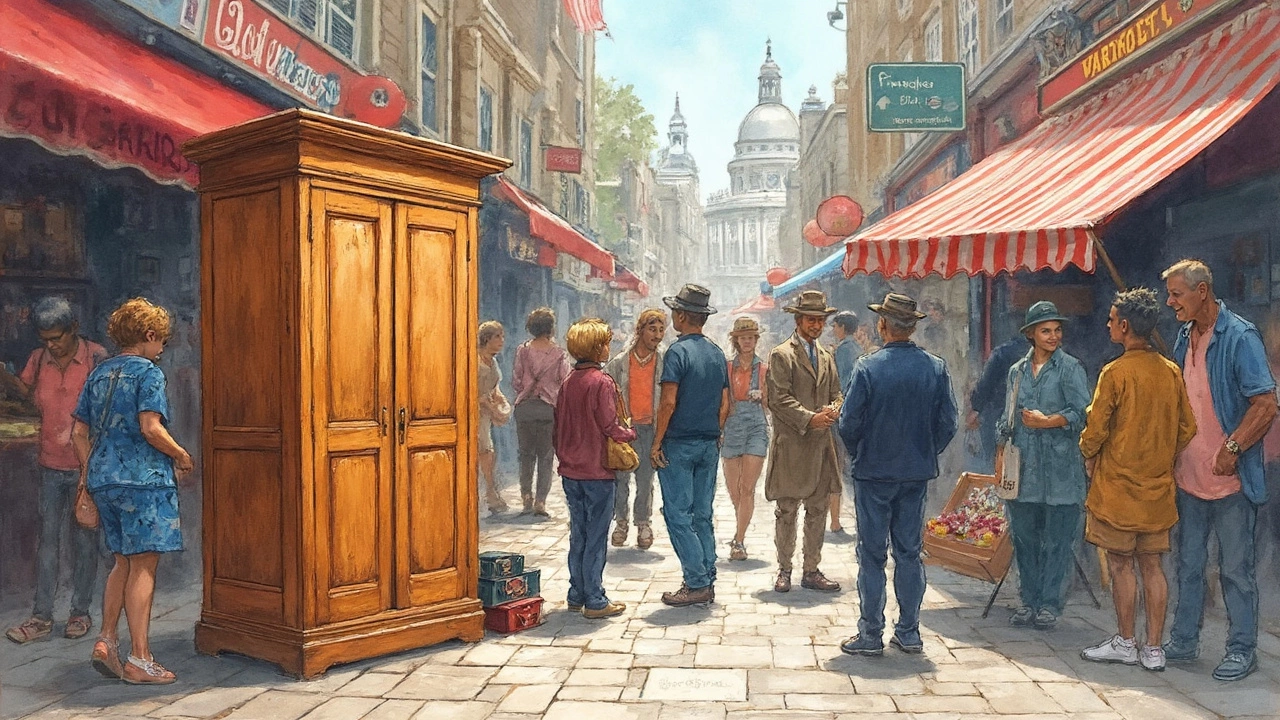
Practical Differences in Usage
When it comes to the everyday use of 'wardrobe' vs. 'closet' in American English, there are some pretty clear differences. Generally speaking, a closet in the US is a permanently built-in space, often complete with sliding or hinged doors. These spaces are usually integrated right into the design of a room, hiding behind walls and acting as storage. Closets are pretty much a staple in American homes, especially in bedrooms.
Now, let's talk about a wardrobe. When Americans use this term, they're typically referring to a standalone piece of furniture. It's more like an armoire or a cabinet where you hang clothes and store other stuff. Think of it as an imported vintage piece you'd add for extra charm or because your bedroom lacks a built-in closet.
Why does this matter? Knowing these differences can help when you're shopping for furnishings or even when you're redesigning a room. If someone in the US says they're looking for a bigger closet, they're likely thinking of remodeling—a construction project. On the other hand, someone seeking a new wardrobe probably just wants a furniture store visit.
Here’s a quick breakdown of each:
- Closet: Built-in, integrated storage. Permanent feature in room architecture.
- Wardrobe: Freestanding, moveable furniture. Offers style and flexibility wherever you need it.
There are quite a few factors to consider if you're deciding between a wardrobe or a closet. Closets often offer more space and can save floor area since they're built-in. Meanwhile, wardrobes let you play with room layout, adding a touch of personal style that's easy to change.
Choosing the Right Word for Your Household
Alright, so you’re standing in your room looking at that large piece of furniture or built-in space where you keep your clothes, and you're having a mini vocabulary crisis. Do you call it a wardrobe or a closet? It’s not just about words; it’s about understanding what fits your space and lifestyle best.
In the U.S., when people talk about a closet, they're usually referring to a built-in part of the room, often with sliding or swinging doors, sometimes even walk-in. It's an architectural feature, a permanent fixture in the room. Now, if you’re thinking about moving or redesigning your space, consider how this might impact your choice between a portable wardrobe or a fixed closet.
If your home doesn't have built-in storage, using a standalone wardrobe might be your best bet. Wardrobes, typically movable furniture with hanging space and sometimes shelves and drawers, can be perfect if you need to rearrange or repurpose your space. You can find wardrobes in a variety of styles, from vintage to sleek modern designs, giving you a chance to add a personal touch.
- For renters or those planning to move, wardrobes offer flexibility. You can take them with you.
- If space is tight, certain wardrobes are designed to fit snuggly in corners, optimizing room usage.
- Eco-friendly tip: Go for reclaimed wood wardrobes for a sustainable choice.
The catch? Closet spaces can offer property value benefits. Built-ins are often considered desirable when buying or selling homes. So, if you're planning renovations or building, investing in custom closets might offer long-term payback.
Ultimately, choosing between a wardrobe and a closet hinges on personal preference, specific needs, and how each fits into your lifestyle. Consider your space, budget, and future plans to find the perfect match for your home.
Wardrobe Tips for Your Home
When it comes to organizing your home, getting your wardrobe, or should I say “closet,” right is a real game-changer. First off, think about the space you've got. If you're lucky with high ceilings, consider vertical storage. Those extra shelves up top could be a lifesaver for off-season clothes.
Your closet can be so much more than just a place to hang clothes. Adding hooks to the inside of doors for belts or scarves can make a big difference. Meanwhile, shoe racks aren't just for shoes; they can hold anything from handbags to small accessories.
Labeling is another great hack. It's not just for the organization junkies. Clear labels can help you spot things in a jiffy. Try grouping clothes by type or color. It not only looks neat but saves time when you’re in a rush.
- Lighting: Poor lighting can make it harsh to find what you need, so consider installing LED strips on closet rods or inside shelves.
- Mirrors: Adding a full-length mirror can enhance your space and serve a dual purpose.
- Decluttering: Set aside clothes you haven't worn in a year for donation, making more room for items you love.
It's also worth investing in some good hangers. Believe it or not, matching hangers not only look better but save space too. Velvet ones keep clothes from slipping and are less bulky.
For a bit of fun, why not use a little fragrance sachet or cedar blocks to keep clothes smelling fresh and ward off moths? Combine these practical tips with a little personal flair, and you've got a wardrobe solution that’s both functional and enjoyable.
